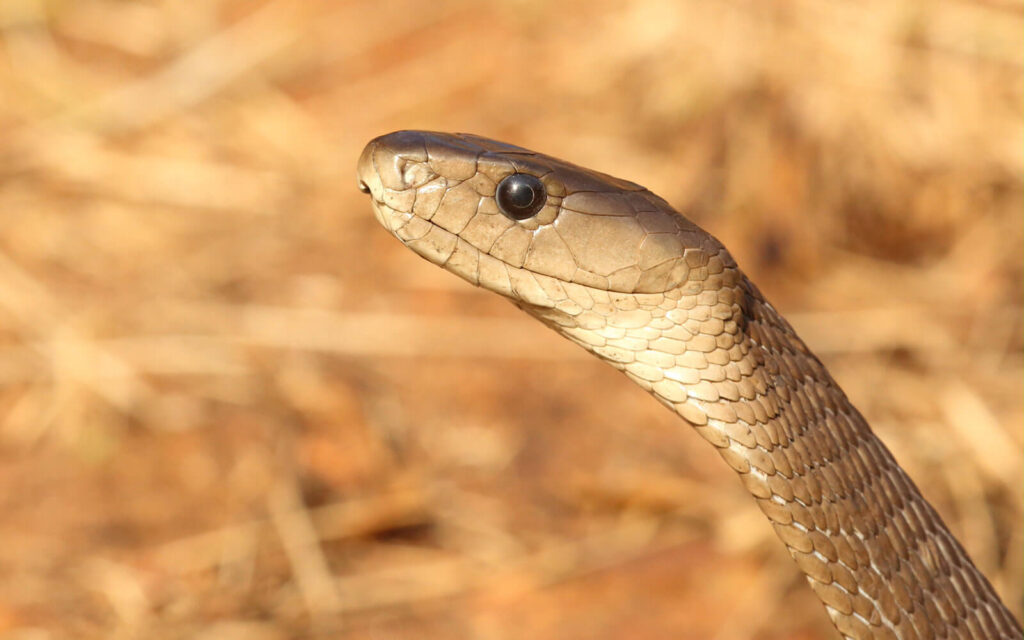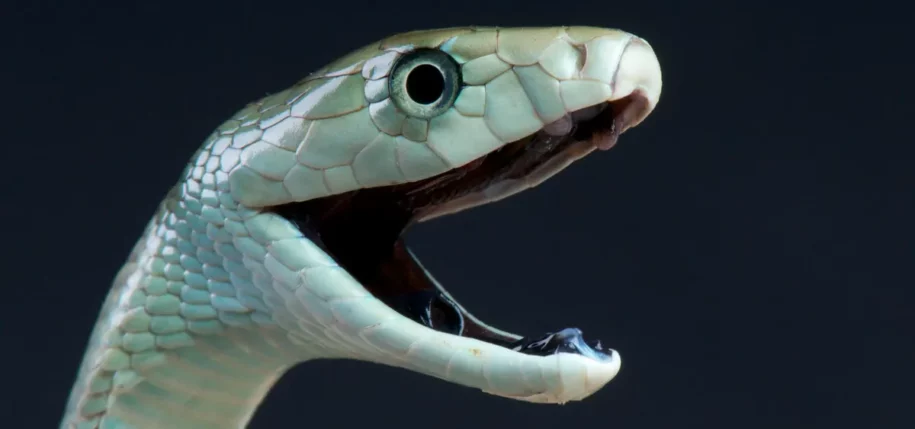The Black Mamba: Africa’s Legendary Serpent of Speed and Fear
Africa’s wildlife is as vast and varied as the continent itself, teeming with animals that captivate and mystify. Among these, one reptile evokes a mix of awe, fear, and fascination more than most — the Black Mamba (Dendroaspis polylepis). Revered in legend and feared in reality, this snake has built a formidable reputation as one of the most dangerous serpents in the world. But how much of that reputation is fact, and how much is myth?
Let’s explore the biology, behavior, ecology, and mystique of the Black Mamba.

1. Identity: The Name is Deceptive
Despite its ominous name, the Black Mamba is not actually black. Its skin ranges from olive to grayish-brown, sometimes even khaki, depending on its environment. The name “Black Mamba” actually refers to the jet-black coloration inside its mouth, which it displays as a warning when threatened.
2. Size and Speed: The Longest and Fastest in Africa
The Black Mamba is Africa’s longest venomous snake, averaging 2.5 to 3.2 meters (8.2 to 10.5 feet) in length, with some individuals reaching up to 4.3 meters (14 feet). This size is matched by extraordinary speed: it is the fastest land snake in the world, capable of slithering at speeds of up to 20 km/h (12.5 mph) over short distances.
This speed, combined with agility, makes it a formidable predator and a difficult animal to escape if provoked.
3. Habitat and Range
The Black Mamba is widely distributed across sub-Saharan Africa, found in countries like South Africa, Kenya, Uganda, Ethiopia, Zimbabwe, Mozambique, and Tanzania. It prefers savannas, rocky hills, dry forests, and open woodlands, where it can find adequate shelter and prey.
They are often found in abandoned termite mounds, hollow trees, and rock crevices, and are both terrestrial and arboreal, meaning they can thrive on the ground or in trees.
4. Behavior and Temperament: Not as Aggressive as Believed
Black Mambas have a fearsome reputation, often exaggerated by folklore. While they are undeniably highly dangerous due to their potent venom and speed, they are naturally shy and will generally avoid human contact when possible.
When threatened and unable to escape, the Black Mamba becomes defensive:
It lifts a third of its body off the ground
Flattens its neck into a cobra-like hood
Opens its black mouth and hisses loudly
If provoked further, it can strike repeatedly and with great accuracy, delivering a rapid series of deadly bites.
5. Diet and Hunting
Black Mambas are carnivorous and primarily feed on:
Small mammals (rodents, squirrels, hyraxes)
Birds and their fledglings
They are diurnal hunters (active during the day) and rely on vision and chemical cues (via the Jacobson’s organ) to locate prey. Once found, they strike quickly and then wait for the venom to immobilize the prey before swallowing it whole.
6. Venom: A Neurotoxic Cocktail
The venom of the Black Mamba is extremely potent, containing neurotoxins and cardiotoxins that affect both the nervous system and the heart.
A single bite can deliver 100–400 mg of venom
10–15 mg is considered potentially lethal to a human
Symptoms include dizziness, difficulty breathing, blurred vision, paralysis, and eventually respiratory failure
Without treatment, death can occur within 7 to 15 hours — or sooner. Fortunately, antivenom is widely available in many parts of Africa, and early administration is highly effective in preventing fatalities.
7. Reproduction and Life Cycle
The Black Mamba is oviparous — it lays eggs rather than giving live birth. Mating typically occurs in spring or early summer, with females laying 6 to 25 eggs in a secure, warm place such as a burrow or hollow log.
The eggs hatch in about 80–90 days
Hatchlings are 40–60 cm long and are fully venomous from birth
Juveniles are independent and receive no parental care
They reach sexual maturity at about 3 years of age and can live for up to 11 years in the wild, or longer in captivity.
8. Cultural Significance and Misconceptions
In many African cultures, the Black Mamba is a symbol of death, power, and fear. In Zulu mythology, it’s sometimes seen as a spirit guardian or ancestral protector, while in rural communities, it is often regarded with deep suspicion and fear.
Popular media has further fueled myths — from exaggerated reports of mambas chasing people down, to inaccurate depictions in movies. In reality, these snakes prefer flight over fight and will only attack if cornered or threatened.
9. Conservation and Human Conflict
The Black Mamba is not currently considered endangered. However, habitat loss, roadkill, and deliberate killing due to fear continue to affect local populations.
Education is critical. Rather than extermination, relocation by trained professionals is the recommended approach when mambas are found in or near human settlements. Programs promoting snake awareness and conservation help to mitigate fear and reduce unnecessary killings.
10. Final Thoughts: A Misunderstood Marvel
The Black Mamba is not the villain it’s often made out to be. It is a remarkable creature — an apex predator in its own right — with a vital role in its ecosystem. Yes, it is dangerous, but it is also beautifully adapted, elusive, and intelligent.
Respecting its space, understanding its behavior, and debunking myths can lead to a healthier coexistence between humans and this iconic African serpent.
Ready to embark on your own unforgettable African adventure?
Start planning your luxury safari with Intrepid Odyssey today!
- Follow us for daily inspiration and incredible wildlife moments:
- Book your bespoke safari experience:Email us directly at bookings@intrepidodyssey.com to craft your dream itinerary.

